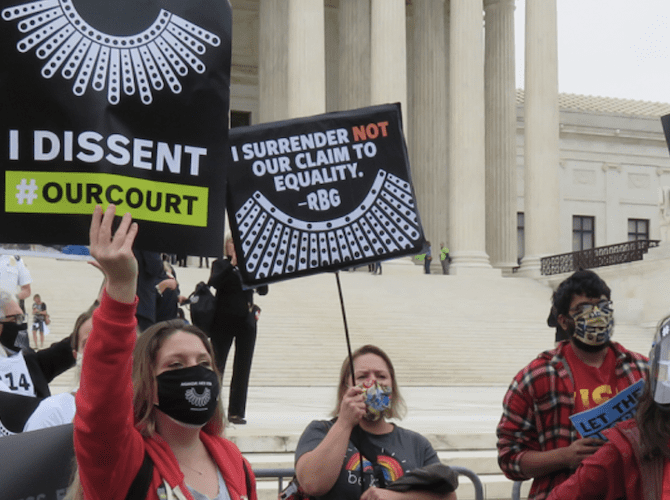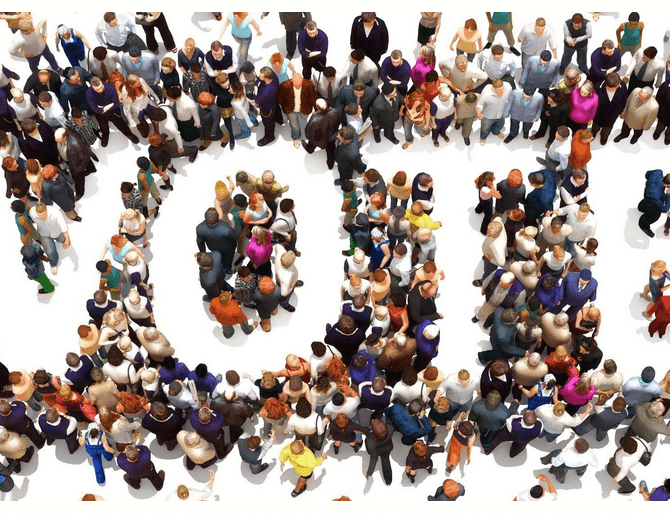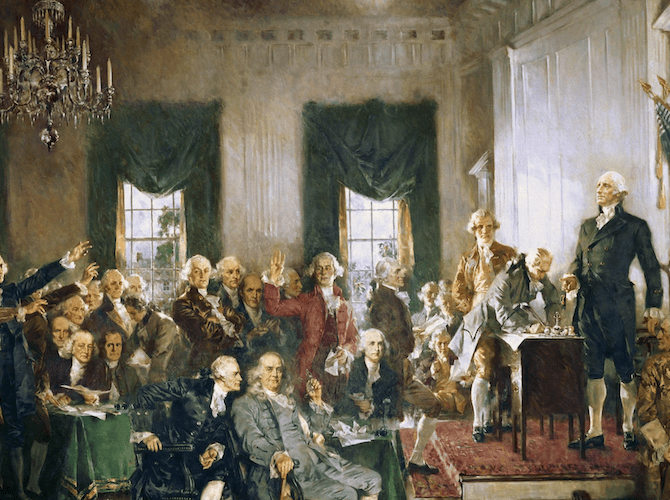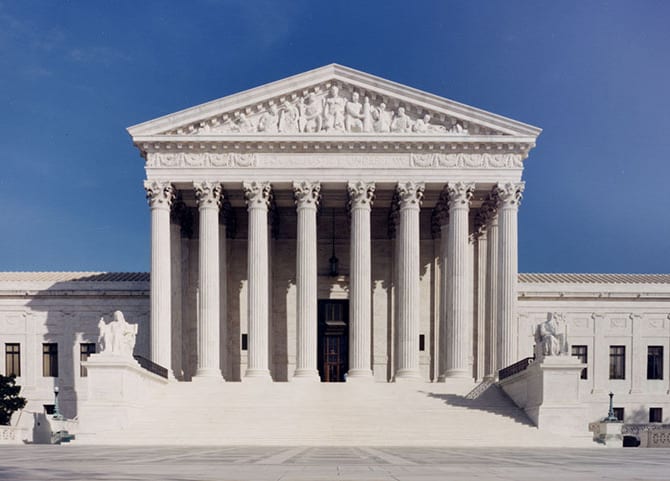Looking Back at the Democrats’ Political Strategies in Florida and Georgia
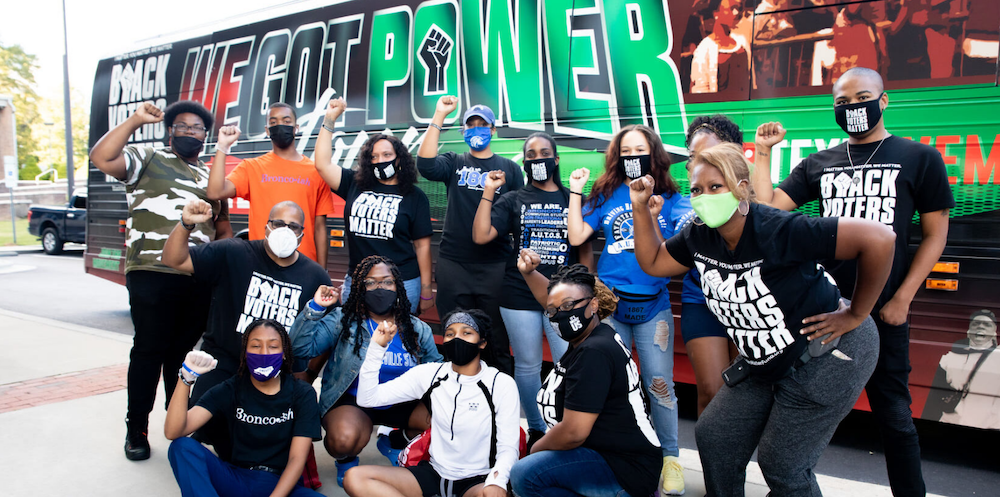
(Photo: blackvotersmatterfund.org)
One day after Florida election officials announced that President Trump and Republican candidates had so badly beaten Democrats up and down the ballot that pundits were asking if Florida had become an irreversible red state, Joe Biden’s Florida campaign held a statewide conference call.
“There was a Florida campaign call today that said Florida allowed us [Biden] to win the Midwest,” said Ion Sancho, a retired longtime Florida Democratic county official, who cringed at the explanation. “It felt like a setup.”
“Biden didn’t go all-in—in South Florida,” said Sancho, who ran elections in the state’s capital county for nearly three decades. “It was a feint to draw Trump’s eyes off of the real prize, which was the three rust-belt states. He never planned to do it [win Florida] from day one. The Midwest was the prize all along.”
Biden’s feint was helped by ex-New York City Mayor Michael Bloomberg, who in mid-September announced that he would spend $100 million for late-breaking media and voter-contact efforts in Florida. The feint led Trump, whose campaign was cash-poor, to concentrate its spending and rallies in Pennsylvania and Florida, especially in South Florida’s metro areas where a vast electorate including diverse Latino voting blocs lived.
“The way I look at this [result] is that the effort here in Florida caused the Trump campaign to spend time, money and resources that could have made a difference in states closely won by Biden,” said Larry S. Davis, a Hollywood, Florida, attorney who this summer helped litigate a Florida Democratic Party lawsuit to preserve digital voting records, in case the state’s 2020 results were contested.
“This was a battle we lost, but it helped win the war—a war this country could not afford to lose,” Davis said.
Nobody likes to hear their hard work campaigning was not a priority. But Sancho’s observations underscore what Democrats must do to win in big and complex states like Florida. His experience also contrasts with neighboring Georgia, where he has seen Democrats and voting rights activists steadily organize for years, and where Biden narrowly beat Trump (in a vote that will be recounted) and where two U.S. Senate runoffs will decide control of that body and much of Biden’s agenda.
“In Georgia, the community of color groups have been active,” said Andrea Miller, executive director of the nonprofit Center for Common Ground, whose volunteers sent 873,000 postcards to non-white Georgia voters, followed up by 316,000 texts and 228,000 phone calls. “Black Voters Matter was going in its direction. I was going in mine. Stacey Abrams [as well as her group, Fair Fight,] was there in Atlanta, and I was out in the rural Black Belt.”
Permanently Red Florida?
While many pundits have placed Florida in the red state column, there were some highlights suggesting, as was the case in Texas (where Biden was briefly leading on election night), that Florida’s Democrats are not permanently exiled. The state adopted a $15-an-hour minimum wage, a union-backed campaign. Miami-Dade County elected its first female mayor, Democrat Daniella Levine Cava. In 2018, voters re-enfranchised more than a million ex-felons, which Republican legislators subverted before 2020’s election.
But the observations by Sancho, the longtime supervisor of elections in Leon County, where Florida’s capital Tallahassee is located, underscored that the task of turning a demographically purple state blue cannot rely on top-down or last-minute campaigning, but takes ongoing organizing that meets voters where they are.
In every election, there are always voting blocs that become the fulcrum even in states with millions of voters. In 2020 in Florida, the various Latino communities, led by refugees from Cuba and South America, were targeted early on by Trump’s campaign. Most visibly, Trump started with Spanish radio ads in June that accused Democrats of being “radical socialists.” The smears went unanswered for weeks, which, in retrospect, showed that the Biden campaign and the national party were not staking out Florida’s tipping-point communities.
“They had no idea what they were doing—there was no Latin campaign at all,” said Sancho, who believed that South Florida’s Latino communities could have been persuaded to vote for Democrats, and had coattails that would have broken the GOP’s lock on statewide power.
Sancho listed a series of big lapses, starting with not responding to Trump’s Spanish ads. A lack of support continued throughout Florida’s August primary, whose late date makes it hard for winners to launch a fall campaign unless a vast field campaign is waiting in the wings. But Biden’s campaign did not want Florida volunteers talking to voters in person due to COVID-19, Sancho said, and did not support alternatives suggested by Latino Democratic officials. When Biden finally visited, Sancho said that he did not invite enough local leaders and did not mention local issues—such as raising the minimum wage or restoring remittances and travel to Cuba. Post-election media analyses echoed these points.
“You can’t replace hard work with anything else,” Sancho said. “You need a message. I saw nothing that they did in South Florida with Latinos.”
In Contrast, Georgia
What unfolded in Georgia, Florida’s neighbor to the north, is a different story.
Georgia is a regional hub and a populous Southern state, but it still has half as many voters as Florida. Unlike Florida, Georgia has seen some of the nation’s most aggressive grassroots voting rights organizing in recent years. These efforts are not just a counterpoint to Biden’s 2020 efforts in South Florida but could make the difference with the two impending U.S. Senate runoffs on January 5, 2021.
From a national perspective, the figurehead leading Georgia’s voting rights movement is Stacey Abrams, a Black woman and lawyer who was the Georgia House minority leader and 2018’s Democratic gubernatorial candidate. Abrams’ opponent in what became the closest governor’s race in a quarter-century was Brian Kemp, a Republican and at the time Georgia’s top statewide election official. Kemp was accused by Abrams of doubling down on voter suppression tactics that had gone on for years. After the election, a federal court ordered Georgia to install a new voting system for 2020, which, in part, is why its 2020 election results have so far withstood attacks by Trump supporters.
In 2018, Abrams had an unapologetic progressive message and focused on reaching and turning out voters, especially from Georgia’s cities. (Thirty-eight percent of Georgia’s voters are from communities of color, according to voting rights activists.) Abrams’ New Georgia Project registered hundreds of thousands of voters and inspired many young activists—much like Bernie Sanders’ presidential campaign. Though she lost the 2018 governor’s race by fewer than 55,000 votes, Abrams continued her voting rights campaign by creating Fair Fight, filing a major federal lawsuit to overturn voting barriers, and branching out from Georgia to other states. (Her efforts were helped by a $5 million donation from Bloomberg, Fair Fight’s biggest donor.)
But Abrams’ new group, Fair Fight, was not the only voting rights group active in Georgia in 2020. The Black Voters Matter Fund is also headquartered in Atlanta and working with the state’s activists. People Demanding Action, led by Miller, enlisted thousands of volunteers across the country to reach non-white voters in rural regions—what she calls “the Black Belt”—of eight Southern states. Georgia also had active chapters of many older-line civil rights organizations.
“We work on voter registration all over the state,” Miller said. “But when we do GOTV [get out the vote], we go straight to the Georgia Black Belt. Why? There’s no Democratic Party out there. If the party exists, it’s small. They don’t have any money. They don’t have VAN [voter activation network—the party’s national voter database] access. They don’t know how to use VAN.”
Unlike South Florida’s Latino Democrats who were frustrated by the Biden campaign, Georgia’s civil rights groups—and new allies such as the Lincoln Project run by anti-Trump Republicans—pushed ahead. While the national media has made much of Biden’s debt owed to Black voters in South Carolina, whose 2020 primary victory revitalized his campaign, Miller said that organizers from communities of color in non-battleground states were not treated “that great.”
The Senate Runoffs
During the next two weeks, Georgia will conduct a statewide audit to affirm the accuracy of its new voting system and then a presidential recount, both of which are likely to be controversial. But behind those headline-grabbing exercises, a bigger political battle will be taking shape.
The state’s voters will decide on January 5 who their next two U.S. senators will be. If Democrats win both of those races, the Senate will be split evenly between Democrats and Republicans, and a tie-breaking vote will be cast by Vice President Kamala Harris, giving Democrats control and new power to pass reforms.
In short, a compressed presidential-scale election will emerge as soon as its 2020 recount ends. In the past, the governing class in Georgia, like many Southern states, used voting barriers to preserve their power. But Georgia now has a new, far more transparent and reliable voting system, compared to 2018. And it has some of the nation’s most experienced voting rights activists, including organizations that have built up their infrastructure for years and aren’t waiting for directions from Washington.
“We’re in the process of sending 2.7 million postcards to every active and inactive voter of color in Georgia,” Miller said. “We have already distributed 1.5 million addresses—this was as of last Friday [November 6]… We are doing phone banks of unregistered voters first, because December 7 is the [runoff’s voter registration] deadline. Then we help people go early vote [starting on] December 14.”



